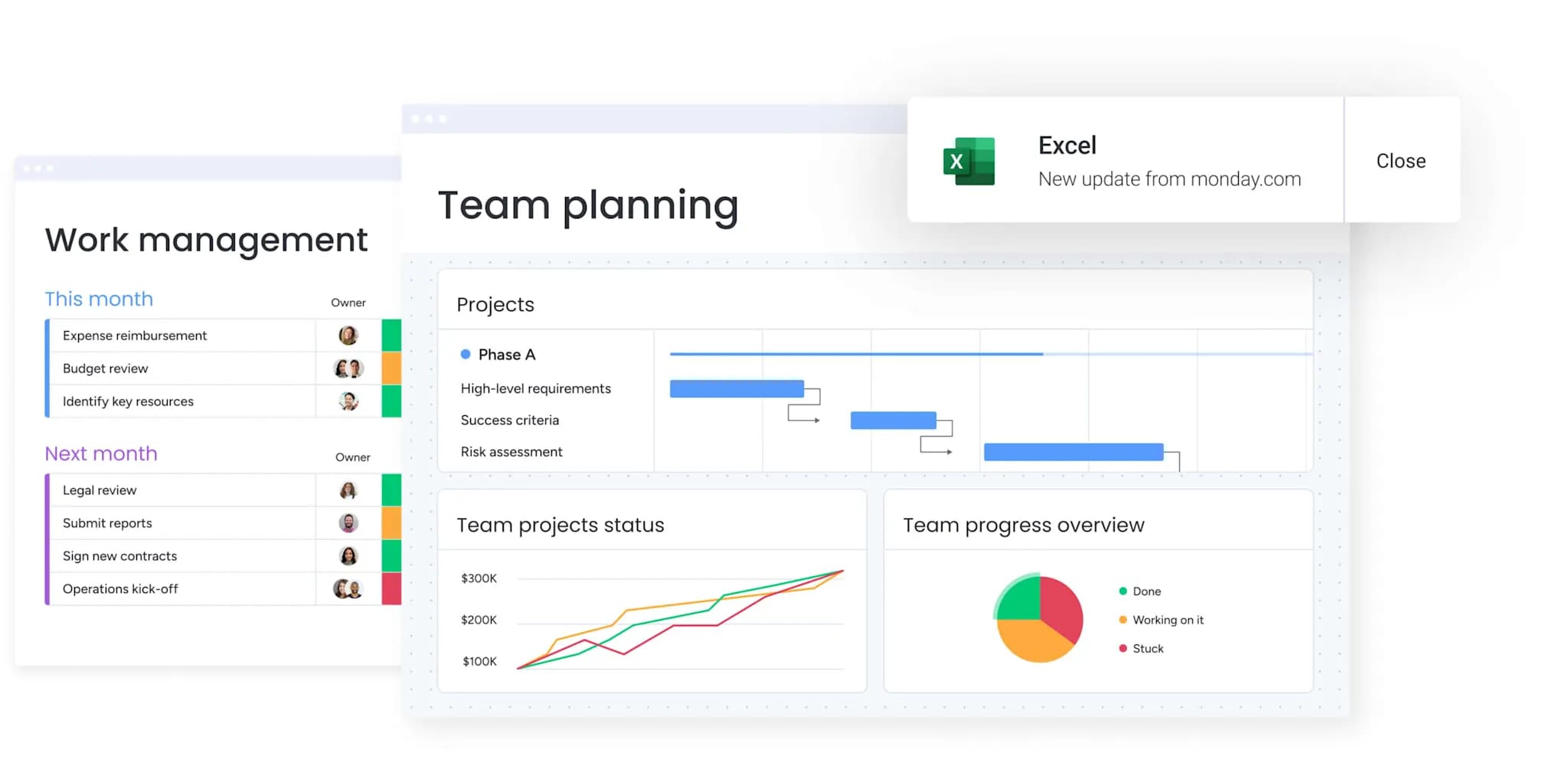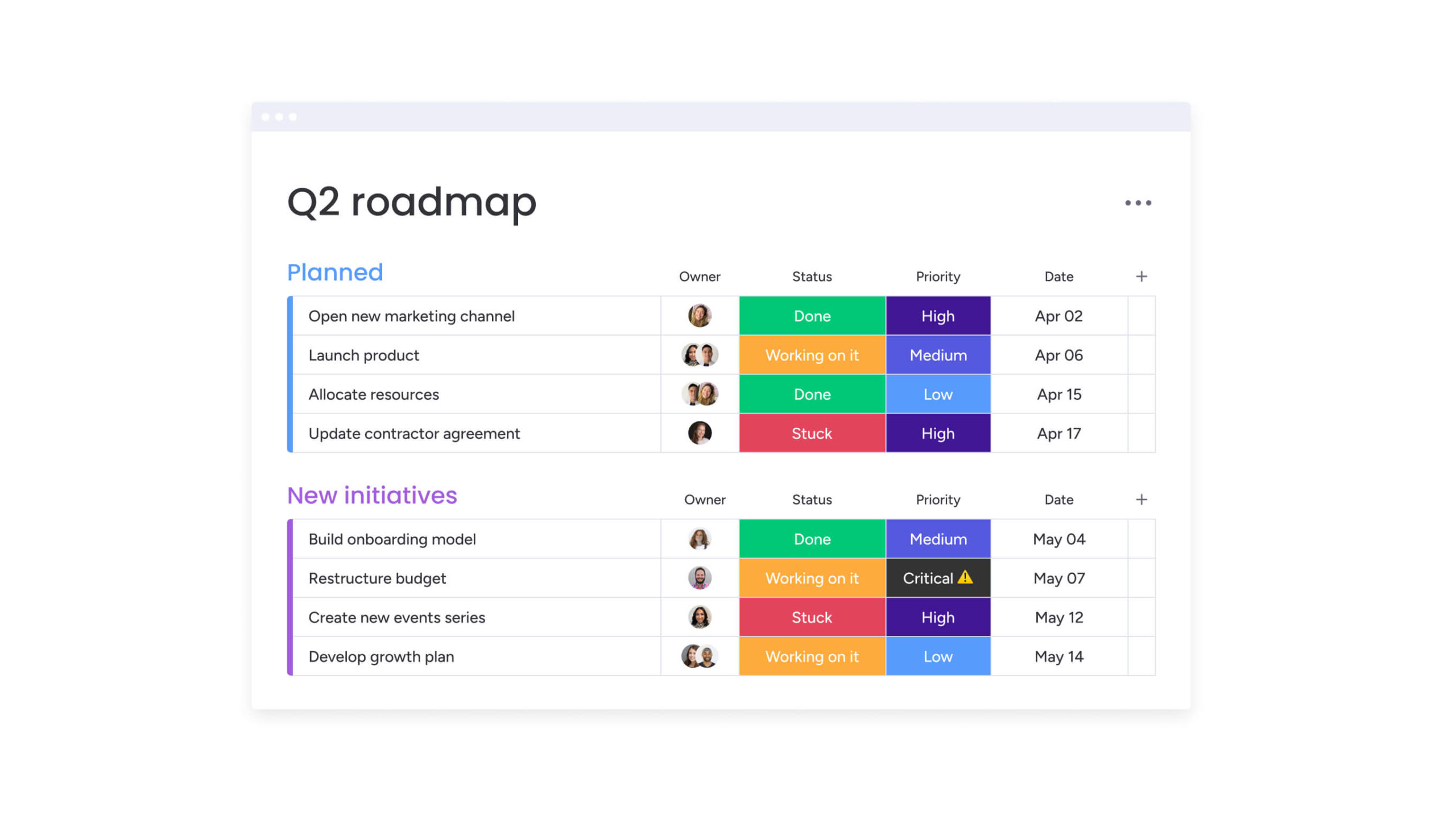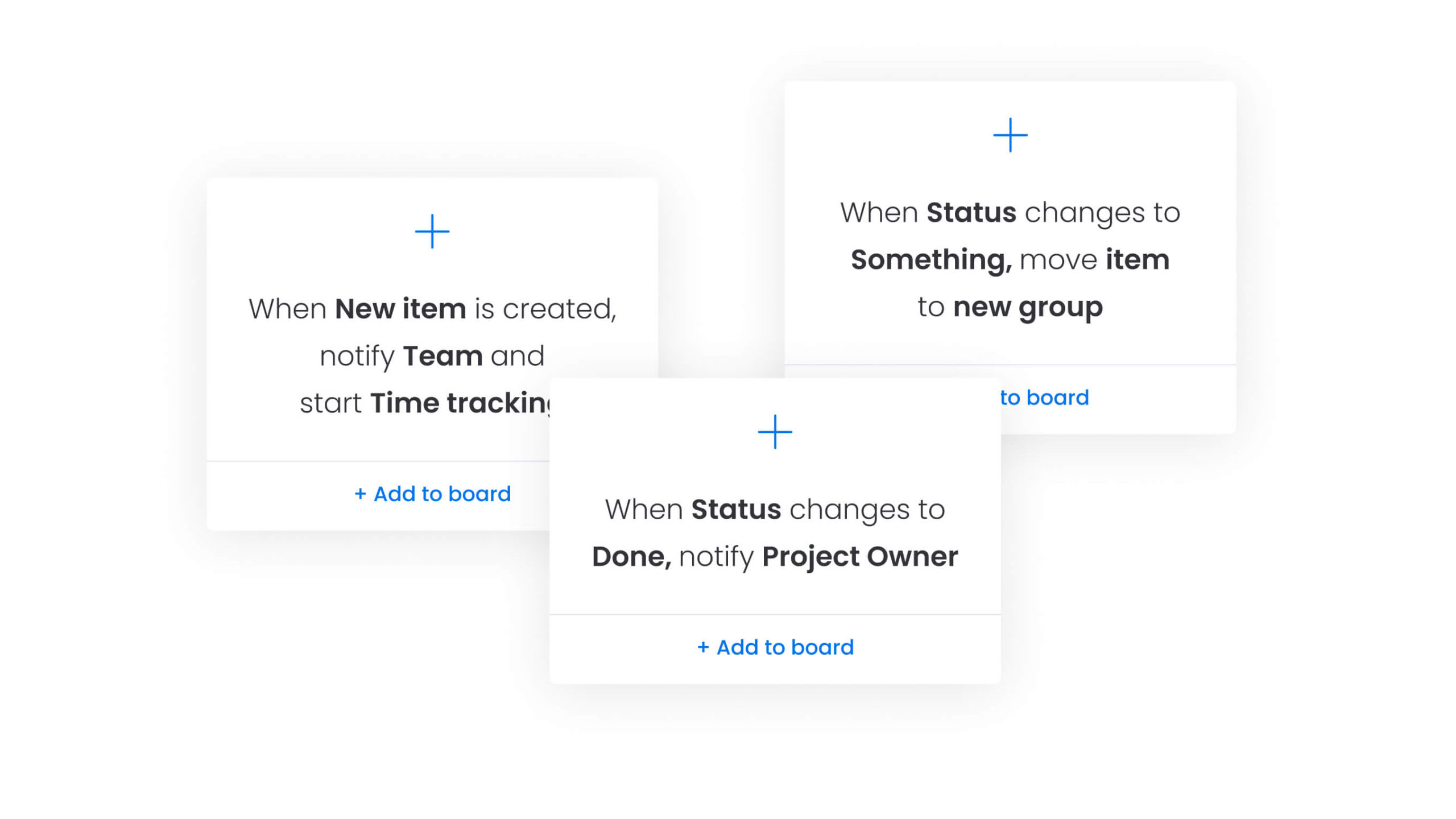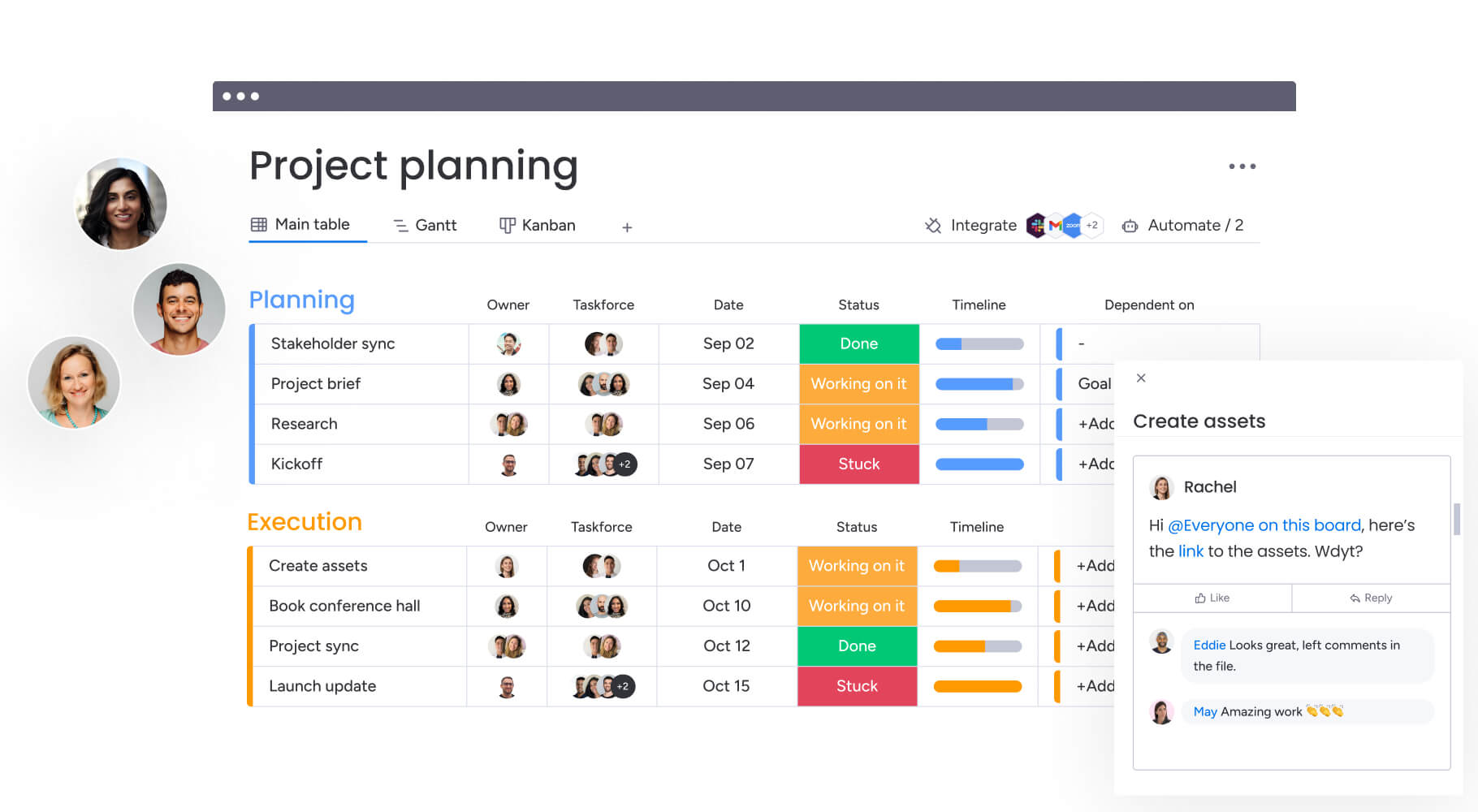Recurring problems often point to deeper issues within a process, system, or team structure. When the same setbacks appear again and again, it usually means the focus has been on quick fixes rather than uncovering what truly went wrong. These short-term solutions might solve the immediate problem, but they rarely prevent it from happening again.
Root cause analysis (RCA) provides a structured way to break that cycle. By using a consistent template, teams can identify underlying causes, analyze patterns, and implement solutions that eliminate issues at their source. The result is a stronger, more resilient workflow where insights from one problem improve performance across the board.
Below, we explore 15 practical templates that help organizations move from reactive problem-solving to a proactive, repeatable approach to continuous improvement.
Key takeaways
- Match templates to problem complexity: use simple frameworks like the 5 Whys for straightforward issues, and structured methods such as fishbone diagrams or 8D for more complex problems.
- Focus on root causes, not symptoms: look beyond surface explanations to uncover patterns and systemic weaknesses that create recurring issues.
- Follow a consistent RCA process: define the problem, gather data, analyze findings, implement solutions, and verify results.
- Centralize RCA workflows: work management tools such as monday work management help teams store templates, automate updates, and identify trends across multiple projects.
- Maintain process integrity: avoid skipping verification steps or rushing analysis, as these shortcuts often lead to repeated problems.

What is root cause analysis?
Root cause analysis is the systematic process of finding the fundamental cause of problems. Instead of fixing symptoms that keep returning, you identify and address the underlying issues creating those symptoms.
When equipment breaks, the obvious fix is replacing the broken part. But RCA asks deeper questions — why did it break? Was maintenance skipped? Were operators untrained? Is the equipment overloaded?
The core principle is simple: problems have layers. Surface symptoms hide deeper causes, which hide even deeper systemic issues. RCA peels back these layers methodically.
- Define the problem precisely: what happened, when, where, and what was the impact?
- Collect relevant data: gather facts through observation, interviews, and documentation.
- Analyze systematically: use proven methods to trace from symptoms to causes.
- Develop targeted solutions: create fixes that address roots, not just branches.
- Track implementation: monitor to ensure solutions actually work.
Essential components of every RCA template
Every effective RCA template shares core components that guide thorough investigation. Understanding the elements outlined beneath helps you choose the right template and empowers you to customize it for your needs.
Problem statement section
A clear problem statement sets the foundation for effective root cause analysis. It should be specific and measurable, outlining exactly what happened, when, and where. For example, “Machine #3 stopped production for two hours on March 15” provides far more clarity than a vague note like “equipment problems.”
Including quantifiable details such as downtime duration, units affected, or revenue impact keeps the team aligned on scope and urgency. Using a work management platform like monday work management helps document these statements consistently, assign ownership, and ensure every investigation begins with the right focus.
Data collection framework
Good analysis needs good data. Your template should guide both what to collect and how to organize it.
Quantitative data includes:
- Measurements: temperature readings, cycle times, error rates.
- Frequencies: how often problems occur.
- Timelines: when events happened in sequence.
Qualitative data covers observations, operator comments, and environmental conditions. Both types matter for complete understanding.
Root cause identification process
This is where templates differ most. Some use questioning techniques, others use visual mapping, but all guide you from symptoms to causes systematically.
The key is following the process without shortcuts. When you think you’ve found the cause, dig one level deeper. True root causes often hide behind obvious explanations.
Corrective action planning
Solutions must target root causes specifically. Your template should distinguish immediate containment (stop the bleeding) from long-term prevention (heal the wound).
Prioritize actions by impact and feasibility. Some fixes are quick wins, others require major changes. Your plan should reflect these differences.
Timeline and milestones
Implementation without deadlines rarely succeeds. Set specific dates for each action, assign clear owners, and define completion criteria.
Include checkpoints to verify progress. Monthly reviews catch stalled actions before they derail your entire solution.
Follow-up and verification
How do you know your solution worked? Define success metrics upfront and schedule verification checks.
Monitor whether problems recur. Document findings using a lessons learned template. Update procedures based on what you discovered. This closes the loop and prevents future issues.

15 essential root cause analysis templates
Every team faces recurring challenges, from quality issues to process inefficiencies that slow progress. Templates bring structure to these investigations, helping teams analyze problems objectively and document findings consistently.
The right framework depends on the issue’s complexity — some templates work best for quick diagnosis, while others guide deeper, cross-functional analysis.
Below are 15 practical root cause analysis templates to help you uncover what went wrong, record insights clearly, and build lasting solutions.
1. 5 Whys template
The 5 Whys template asks “why” repeatedly until you reach the core issue. You start with your problem and ask why it happened, then ask why that cause occurred, continuing until you find the root.
This works best for straightforward problems with direct cause-and-effect relationships. A machine stops working? Ask why. The motor burned out? Ask why. No preventive maintenance? There’s your root cause.
2. Fishbone diagram template
The fishbone diagram template (or Ishikawa diagram) organizes potential causes into categories. You draw a fish skeleton with the problem as the head and major cause categories as bones.
Standard categories include:
- People: training gaps, communication issues.
- Process: missing steps, unclear procedures.
- Equipment: maintenance problems, outdated systems.
- Materials: quality issues, supply problems.
- Environment: temperature, workspace layout.
- Management: policies, resource allocation.
3. Pareto analysis template
Pareto analysis applies the 80/20 rule to problem-solving. You list all causes, measure their impact, then focus on the vital few that create most problems.
If customer complaints come from 10 different sources, this template helps you identify which two to three sources generate 80% of issues. You solve those first for maximum impact.
4. Failure mode and effects analysis template
FMEA prevents problems before they happen. You examine each process step or component, identify how it might fail, assess the impact, and create preventive measures.
Healthcare uses FMEA to prevent medical errors; one study found that pharmacists using FMEA identified 90 failure modes in their dispensing process. Manufacturing applies it to catch defects before production. Any high-risk process benefits from this proactive approach.
5. 8D problem solving template
The 8 Disciplines (8D) method brings teams together to solve complex, recurring problems. You form a team, describe the problem, contain immediate damage, find root causes, implement solutions, prevent recurrence, and recognize the team.
Cross-functional problems need this collaborative approach. While common in the auto industry, the 8D model has also been applied successfully in healthcare, retail, finance, and manufacturing. When issues span multiple departments, 8D provides the structure to coordinate everyone’s efforts.
6. Scatter diagram template
Scatter diagrams reveal relationships between variables. You plot one factor against another to see if they’re connected.
Does overtime correlate with error rates? Do temperature changes affect product quality? This visual template shows patterns that numbers alone might miss.
7. Is Is Not analysis template
This template defines problem boundaries. You systematically compare where the problem occurs versus where it doesn’t, when it happens versus when it doesn’t.
By narrowing the scope, you eliminate irrelevant factors and focus your investigation on the most likely causes.
8. Fault tree analysis template
Starting with a failure, you work backward to map every possible cause. The visual tree shows how different events combine to create problems.
Aviation and nuclear industries rely on fault trees for safety analysis. Complex technical systems benefit most from this comprehensive mapping.
9. DMAIC root cause analysis template
DMAIC template brings data-driven rigor to problem-solving. You Define the problem, Measure current performance, Analyze data for causes, Improve the process, and Control future performance.
Organizations focused on continuous improvement use DMAIC to ensure solutions stick and processes keep getting more efficient.
10. A3 problem solving template
Toyota’s A3 method fits everything on one page. You document the background, current state, target state, analysis, countermeasures, and follow-up plan.
This constraint forces precise thinking. If you can’t explain it on one page, you probably don’t understand it well enough.
11. Kepner-Tregoe analysis template
This template separates problems from decisions. You clarify the problem, break it into parts, identify possible causes, and test them against facts.
When problems seem overwhelming or interconnected, Kepner-Tregoe provides logical steps to untangle the complexity.
12. Root cause and corrective action template
RCCA templates combine investigation with action planning, similar to a corrective action plan template. You document the problem, find causes, plan corrections, implement them, and verify effectiveness.
Regulated industries often require this comprehensive documentation for compliance and audit purposes.
13. Apollo root cause analysis template
Apollo RCA maps cause-and-effect relationships using evidence. You create visual charts showing how causes connect and interact.
This reality-based approach helps teams see the full picture of how problems develop through multiple contributing factors.
14. Change analysis template
When problems follow changes, this template helps identify connections. You compare before and after conditions to spot what shifted.
System upgrades, process changes, and reorganizations often create unexpected issues. This reality is reflected in data showing that while 45% of senior leaders believe change is managed ‘very well,’ but only 23% of individual contributors agree.
A change management plan template can also help reveal these unintended consequences.
15. Barrier analysis template
Barrier analysis examines what should have prevented the problem. You identify failed safeguards and missing controls.
Safety incidents particularly benefit from understanding which barriers broke down and how to strengthen them.
Try monday work managementHow to select the right RCA template for your needs
Choosing the right template starts with understanding your situation. Different problems need different investigation approaches.
- Simple, linear problems: use 5 Whys when cause-and-effect relationships are straightforward.
- Complex, multi-factor issues: apply fishbone diagrams or 8D methodology.
- Proactive risk prevention: choose FMEA before problems occur.
- Data-rich situations: select DMAIC for statistical analysis.
- Safety-critical failures: use fault tree or barrier analysis.
Your organizational context also matters. Regulated industries might require specific documentation formats. Cross-functional teams need collaborative templates. Time-pressed situations favor simpler methods.
Modern platforms like monday work management let you start with standard templates then adapt them to your needs: add custom fields, modify workflows, or combine methods as your investigation evolves.

5 steps to implement root cause analysis templates
Having the right template is only half the solution — how you apply it determines whether problems truly get solved. A structured approach helps teams stay objective, follow evidence, and turn findings into lasting improvements.
The five steps below outline how to implement root cause analysis templates effectively, from defining the problem to verifying that corrective actions deliver real results.
Step 1: define the problem clearly
Write exactly what went wrong without assumptions or blame. Include when it happened, where, who was affected, and measurable impacts.
- Good: “Order processing time increased from two to five days starting March 1st, affecting 300 customers and generating 50 complaints.”
- Poor: “Orders are taking too long lately.”
Step 2: gather and organize data
Collect information while it’s fresh. Interview people involved, review system logs, examine physical evidence, and document everything.
Organize data by type and timeline. With platforms such as monday work management, teams can centralizes this information, making it accessible to all team members while maintaining proper documentation.
Step 3: analyze using your chosen template
Follow your template’s methodology step by step. Resist jumping to conclusions or skipping sections that seem unnecessary.
If using 5 Whys, ask each question fully before moving to the next. With fishbone diagrams, brainstorm all categories before narrowing focus. Trust the process.
Step 4: develop corrective actions
Target root causes directly. Separate quick fixes that stop immediate problems from permanent solutions that prevent recurrence.
Each action needs an owner, deadline, and success criteria. “Improve training” is vague. “Conduct equipment maintenance training for all operators by April 30th” drives results.
Step 5: monitor and verify results
Track whether solutions work. Set up measurements, schedule reviews, and be ready to adjust if problems persist. You could also use a post mortem template for thorough reflection.
Document what you learn. Update procedures, share insights with other teams, and build organizational knowledge that prevents future issues.
Try monday work management7 best practices for effective root cause analysis
Even experienced teams fall into predictable traps sometimes. However, recognizing these mistakes helps you avoid them and conduct more effective investigations.
Below we’ve listed some key best practices to follow, while incorporating risk analysis in project management can also uncover potential issues early.
Stopping at symptoms
The most common mistake is accepting the first plausible cause. Equipment failed because a part broke — investigation over. But why did the part break?
Keep digging until you reach systemic issues. Parts break due to poor maintenance schedules, which exist because of budget constraints, which stem from unclear priorities.
Choosing the wrong template
Using FMEA for a simple problem wastes time. Using 5 Whys for complex failures misses important factors. Match your method to your situation.
Consider complexity, available time, and required documentation before selecting your approach.
Rushing the process
Pressure to fix problems quickly leads to incomplete analysis. You implement a quick fix, the problem returns, and you’re back where you started.
Invest time upfront for lasting solutions. Thorough analysis prevents repeated investigations of the same issue.
Missing key perspectives
This perception gap is common; for example, while 92% of senior leaders believe their organization fosters shared ownership, that number drops to 76% for individual contributors. The customer sees issues the internal team misses. Effective RCA includes all relevant viewpoints.
Involve people who understand the system, witnessed the problem, and will implement solutions.
Poor follow-through
Identifying root causes is only useful if solutions are carried through. Many teams lose momentum after planning corrective actions, leaving problems unresolved.
Work management tools like monday work management help maintain progress by tracking tasks, automating reminders, and ensuring accountability until every action is complete.
Skipping verification
How do you know your fix worked? Without verification, problems can recur silently until they cause major disruptions.
Schedule follow-up reviews. Monitor key indicators. Confirm that root causes are truly eliminated.
Inadequate documentation
Poor documentation means you solve the same problems repeatedly. Future teams can’t learn from your work if they can’t find or understand it.
Create clear records that others can follow. Include your reasoning, not just conclusions.

Automate your root cause analysis with monday work management
Manual RCA processes often fail under real-world complexity with teams struggling to coordinate, track multiple investigations, and maintain standards across the organization.
monday work management transforms RCA into a scalable, systematic process that grows with your needs. Here’s how it enhances your root cause analysis:
- Standardized templates: build consistent workflows that guide every investigation while allowing customization for specific situations.
- Centralized information: keep all data, discussions, and decisions in one searchable location that team members can access anytime.
- Automated workflows: set up triggers for notifications, approvals, and follow-ups that keep investigations moving without manual oversight.
- Real-time collaboration: enable teams to work together regardless of location, with clear visibility into responsibilities and progress.
- Pattern recognition: spot recurring issues across multiple incidents through dashboards and reports that surface hidden trends.
Advanced automations for seamless RCA workflows
Eliminate manual steps that slow down your investigations with automations that trigger the right actions at the right time. Build intelligent workflows that adapt to your team’s needs without requiring technical expertise.
- Conditional automations: create if/then scenarios that route investigations based on severity, department, or root cause type.
- Time-based triggers: schedule automatic follow-ups to verify solution effectiveness.
- Status change actions: notify stakeholders instantly when investigation phases advance.
200+ integrations to connect your entire tech stack
Pull critical data from every corner of your organization without switching between platforms. Connect monday work management to your existing tools for a unified RCA experience.
- CRM integrations: import customer feedback directly into your root cause analysis.
- Development tools: link investigations to related bugs and issues in Jira, GitHub, and more.
- Communication apps: push updates to Slack and Teams to keep everyone informed.
Powerful AI features that accelerate analysis
Let AI handle the heavy lifting so your team can focus on solving problems rather than processing data. monday work management’s AI capabilities transform how you approach root cause analysis.
- Pattern detection: automatically identify correlations between seemingly unrelated incidents.
- Content summarization: distill lengthy investigation notes into actionable insights.
- Solution recommendations: receive AI-generated suggestions based on successful resolutions to similar past issues.
Continuous improvement tracking for lasting solutions
Move beyond one-time fixes to create a cycle of ongoing improvement. monday work management helps you monitor the effectiveness of your solutions and build organizational knowledge over time.
- Solution effectiveness metrics: track whether implemented changes actually prevent recurrence.
- Knowledge base building: document successful approaches for future reference.
- Trend analysis: identify systemic issues that span multiple incidents.
Integration with your existing systems means no disruption to current processes. Pull data from other platforms, push updates to stakeholders, and maintain seamless workflows throughout your investigation.
Try monday work managementFrequently asked questions
What is the difference between 5 Whys and fishbone diagram templates?
The 5 Whys template takes a straightforward, step-by-step approach by repeatedly asking “why” to trace a single chain of causes until the root issue becomes clear. In contrast, a fishbone diagram explores multiple potential causes at once, grouping them into categories such as people, process, equipment, materials, or environment. The 5 Whys is ideal for simple, direct problems, while fishbone diagrams work better for complex issues with several contributing factors.
Can I combine multiple root cause analysis methods in one investigation?
Combining methods often provides more thorough results than using one alone. Many teams start with fishbone diagrams to identify potential causes, then apply 5 Whys to the most promising areas for deeper investigation.
How long should a root cause analysis take to complete?
Timeline varies by complexity — simple operational issues might take two to four hours using basic templates, while complex technical failures requiring extensive data collection can take several weeks. Most standard problems can be analyzed within one to three days.
Do I need special training to use root cause analysis templates?
Basic templates like 5 Whys require minimal training and can be learned quickly through practice. Advanced methods like FMEA or Six Sigma tools benefit from formal instruction to ensure accurate application and reliable results.
Which industries benefit most from root cause analysis templates?
While all industries use RCA, manufacturing, healthcare, aviation, and other safety-critical sectors depend on them most heavily. Service industries increasingly adopt these methods to improve customer experience and operational efficiency.
How do I know if my root cause analysis was successful?
Success means the problem doesn't recur and you achieve measurable improvement in the affected process. Key indicators include reduced incident frequency, improved performance metrics, and confidence that you've addressed causes rather than symptoms.
 Get started
Get started 
